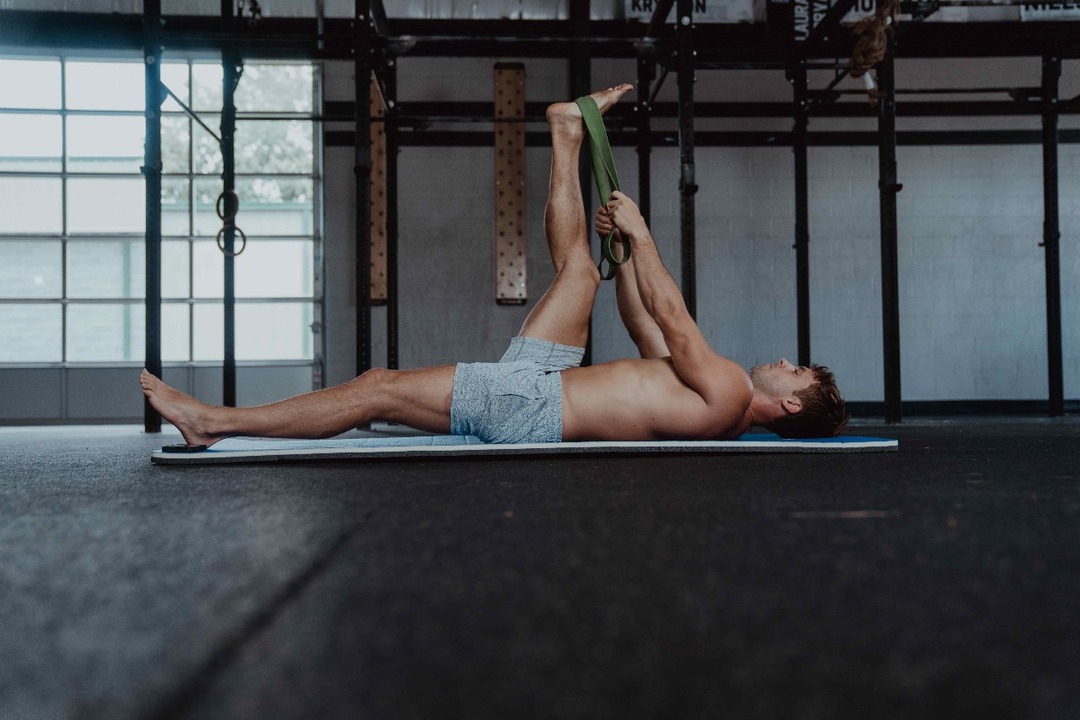Athletes put their bodies through much stress, whether in training or competition. As a result, they often experience tightness and restrictions that can hamper performance. Mobility exercises improve athletes' flexibility and range of motion, helping to reduce pain and discomfort so athletes can perform better. This article will introduce you to ten mobility exercises for athletes so you can enhance athletic performance and get back to doing what you love.
Pliability's mobility app is a valuable tool for learning and tracking mobility exercises for athletes. The app breaks down exercises into easy-to-follow steps and provides video demonstrations to help you grasp the movements. You can also customize routines to help you target specific areas of tightness and restriction.
What is Mobility Training?
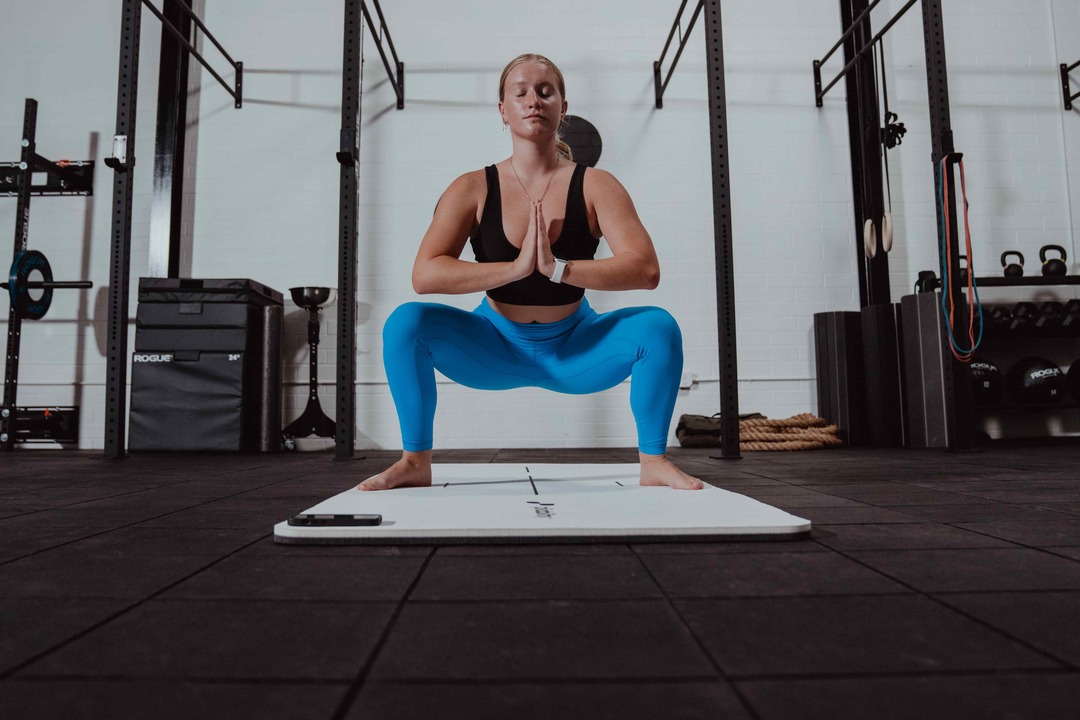
Mobility and flexibility are often confused. They differ in key areas. Flexibility is how far a muscle can stretch. In contrast, mobility is how far a joint can move in its range of motion. While flexibility is an essential factor in mobility, it is just one piece of the puzzle. Mobility combines flexibility and strength to improve athletic performance and reduce injury risks.
The Lowdown on Mobility
Mobility refers to a joint’s ability to move freely and efficiently within its full range of motion. Better mobility helps athletes control their movements and maintain stability, especially during dynamic activities such as:
- Sprinting
- Jumping
- Landing
Improved mobility can enhance athletic performance while reducing the risk of injuries caused by joint instability or poor movement patterns.
Why Joint Health Matters
Joints are the connectors that enable movement. Overall performance will suffer if they don’t have the necessary range of motion. Restricted joint mobility can result in the following:
- Muscle imbalances
- Poor posture
- Injuries
Healthy joints move quickly through their full range of motion. Athletes who don’t work on joint mobility can develop stiffness and limited movement, affecting performance and increasing injury risk.
Joint-Specific Mobility
Incorporating joint-specific mobility exercises, like hip rotations or shoulder stretches, into your routine can help:
- Maintain joint health
- Prevent overuse injuries
Mobility vs. Flexibility: The Importance of Control
Flexibility without mobility may make you more prone to injury because you can stretch farther but lack the strength to control those movements. Mobility focuses on building strength in your range of motion, making you a more:
- Balanced
- Stable athlete
While flexibility is the ability of a muscle to stretch, mobility is the ability to control and stabilize a joint through its full range of motion. This control prevents injury and ensures powerful, efficient movements in sports.
Dynamic Duo
A practical tip for developing strength and flexibility around joints is to combine static flexibility stretches (like hamstring stretches) with mobility drills (like hip flexor stretches).
Related Reading
- Ankle Mobility Exercises
- Shoulder Mobility Exercises
- Hip Mobility Exercises
- How To Improve Flexibility
- Thoracic Mobility Exercises
- Stretch Before Or After Workout
- Wrist Mobility Exercises
- Mobility Exercises For Beginners
- Best Stretching Routine
- Back Mobility Exercises
- Lower Body Mobility Exercises
- Leg Mobility Exercises
The Importance of Mobility in Sports Performance
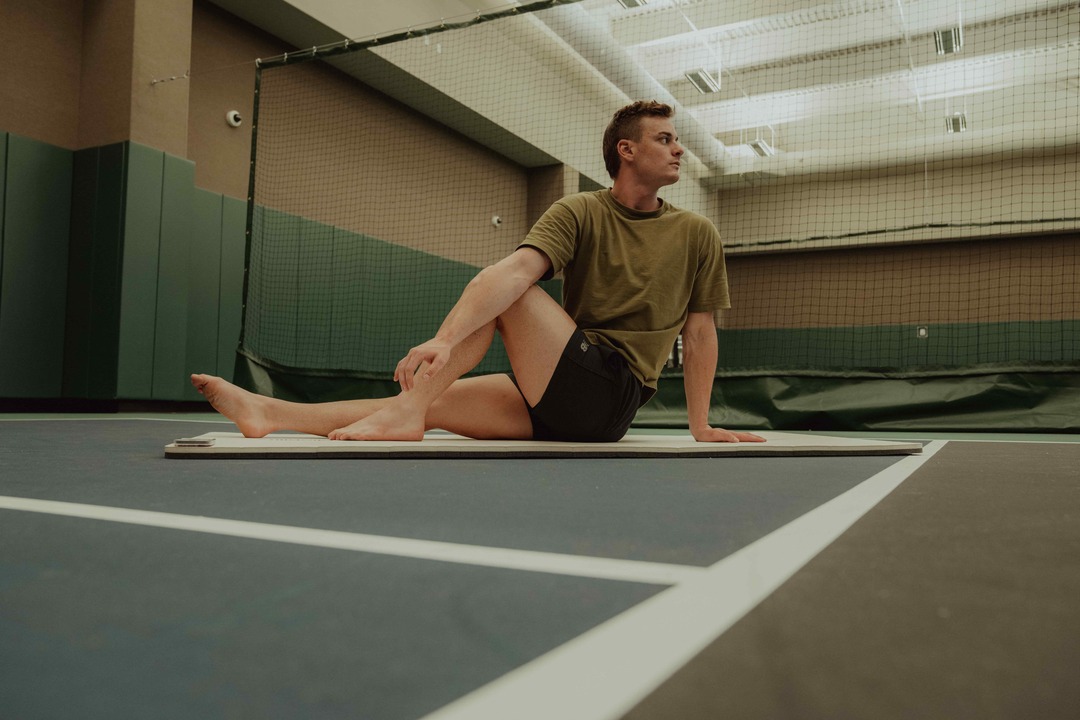
Mobility is crucial for athletes and directly impacts sports performance. Better mobility enhances strength, speed, and agility while reducing the risk of injury.
Improved mobility benefits various sports, such as basketball, soccer, and tennis, and helps athletes recover better between training sessions and competitions.
Mobility Enhances Strength and Power Output
Mobility allows athletes to perform movements with better alignment and control, maximizing their strength and power. Strong athletes can be limited in their performance without proper mobility because their joints cannot move freely enough to take advantage of their strength.
Improved joint mobility helps athletes perform full-range movements like deep squats, lunges, or overhead presses more effectively. This increases the strength they can generate because their muscles can engage fully across the entire movement. Focus on exercises that enhance mobility in key areas, such as:
- Hips
- Shoulders
- Ankles, to improve performance in movements like jumping, sprinting, and weightlifting
Mobility Reduces Injury Risk
Poor mobility leads to compensations in movement patterns, which can cause overuse injuries or acute injuries like:
- Sprains
- Strains
Athletes with greater mobility are less likely to suffer from these issues because they can move through their full range of motion without placing undue stress on their joints. When joints move freely, muscles, tendons, and ligaments are not overstretched or forced into awkward positions.
Targeted Mobility
This reduces the likelihood of injury during high-impact and repetitive movements, which are common in sports. Focus on mobility exercises specific to the joints you use most in your sport. Tennis players should work on shoulder and hip mobility to reduce the risk of overuse injuries during serving and quick lateral movements.
Mobility Improves Recovery and Endurance
Mobility helps muscles and joints recover faster after intense training or competition. Athletes with good mobility can stretch and release tension in their muscles, which:
- Promotes better blood flow
- Reduces stiffness after workouts
Mobility exercises that target tight areas, such as the hips, back, or calves, can;
- Improve circulation
- Reduce muscle soreness
Faster Recovery
This helps athletes recover more quickly between training sessions and improves overall endurance by keeping the body loose and limber. Incorporate mobility training into your recovery routines, such as stretching after workouts or using mobility exercises on rest days. This can prevent stiffness and promote faster recovery, allowing you to train harder in the long term.
Mobility’s Impact on Agility and Coordination
Athletes with better mobility can move more fluidly, improving their agility and coordination during competition. This can lead to:
- Faster reaction times
- Better balance
- More efficient movement patterns.
Mobility allows athletes to perform quick, multi-directional movements without restriction. For example, a soccer player with good hip and ankle mobility can change direction more quickly, improving their ability to react to opponents on the field.
Agility Boost
Focus on exercises that improve hip, ankle, and shoulder mobility to boost your agility. Mobility in these areas is crucial for quick lateral movements and explosive actions in sports like basketball or soccer.
Pliability offers a fresh take on yoga, tailored for performance-oriented individuals and athletes. Our app features a vast library of high-quality videos designed to:
- Improve flexibility
- Aid recovery
- Reduce pain
- Enhance range of motion
Personalized Mobility
Pliability provides daily-updated custom mobility programs for those interested in optimizing their health and fitness. It also includes a unique body-scanning feature to pinpoint mobility issues. If you're feeling limited by pain or ability to move, Pliability aims to complement your existing fitness routine and help you move better.
Sign up today to get 7 days absolutely for free on iPhone, iPad, Android, or our website to improve flexibility, aid recovery, reduce pain, and enhance range of motion with our mobility app.
Top 10 Mobility Exercises for Athletes

1. Hip Flexor Stretch
- How to Perform: Start in a kneeling lunge position with one foot forward and the other knee on the ground. Gently press your hips forward while keeping your torso upright. Hold for 30 seconds and switch sides.
- Benefits: This stretch increases hip mobility and reduces tension in the hip flexors, which is essential for athletes who perform running or jumping motions.
- Best For: Runners, basketball players, soccer players.
2. World’s Greatest Stretch
- How to Perform: Begin in a high plank position, step one foot outside your hand, and drop your hips down. Reach the same hand toward the sky, rotating your torso. Repeat on the opposite side.
- Benefits: This exercise stretches the hip flexors, hamstrings, and thoracic spine, providing a full-body stretch that improves overall mobility.
- Best For: Athletes in sports requiring rotational movements like tennis, golf, and baseball.
3. Thoracic Spine Rotation
- How to Perform: Start on all fours with your hands under your shoulders and knees under your hips. Place one hand behind your head and rotate your upper body, bringing the elbow toward the ceiling. Repeat on both sides.
- Benefits: Improves mobility in the upper back, which is critical for sports involving rotational movement and upper-body control.
- Best For: Swimmers, golfers, baseball players.
4. Ankle Dorsiflexion Stretch
- How to Perform: In a kneeling position, place one foot forward and gently press your knee over your toes while keeping your heel on the ground. Hold for 30 seconds on each side.
- Benefits: Increases ankle mobility, improving movements like squatting, sprinting, and jumping.
- Best For: Basketball players, track and field athletes, weightlifters.
5. 90/90 Hip Switch
- How to Perform: Sit on the floor with your legs bent at 90-degree angles, one in front of you and one behind. Switch sides by rotating your legs while keeping your torso upright.
- Benefits: Strengthens and stretches the hip muscles, improving rotational mobility for better lateral movements.
- Best For: Martial artists, soccer players, tennis players.
6. Quadruped Rock Back
- How to Perform: Start on all fours, knees under hips, and hands under shoulders. Slowly sit back toward your heels while maintaining a neutral spine. Then, return to the starting position.
- Benefits: It enhances hip and spine mobility while reducing lower back pressure. It is great for athletes who need to move dynamically from a low position.
- Best For: Wrestlers, gymnasts, hockey players.
7. Deep Squat Hold
- How to Perform: Stand with feet shoulder-width apart and squat down as low as possible while keeping your heels on the floor. Hold this position for 30 seconds, focusing on maintaining an upright chest.
- Benefits: It improves hip, knee, and ankle mobility, which is essential for athletes who rely on lower-body strength and explosiveness.
- Best For: Weightlifters, football players, track and field athletes.
8. Shoulder Dislocations with Resistance Band
- How to Perform: Hold a resistance band overhead with a wide grip. Slowly bring the band behind your head, stretching your shoulders. Return to the starting position.
- Benefits: Increases shoulder mobility, which is important for athletes who perform overhead movements.
- Best For: Swimmers, volleyball players, weightlifters.
9. Couch Stretch
- How to Perform: Place one knee on the ground with your back foot resting on a wall or couch. Step the opposite foot forward and press your hips forward while keeping your torso upright.
- Benefits: Stretches the hip flexors and quadriceps, reducing tension in the lower body and improving hip mobility.
- Best For: Runners, cyclists, basketball players.
10. Pigeon Pose
- How to Perform: From a plank position, bring one knee forward and place it behind your wrist, with the foot angled toward the opposite hip. Lower your torso over your front leg and hold the stretch.
- Benefits: Stretches the hips and lower back, releasing tension and improving mobility in the hip joint.
- Best For: Yogis, runners, and athletes who experience tight hips.
Pliability for Enhanced Mobility and Recovery
Pliability offers a fresh take on yoga tailored for performance-oriented individuals and athletes. Our app features a vast library of high-quality videos designed to:
- Improve flexibility
- Aid recovery
- Reduce pain
- Enhance the range of motion
Pliability provides daily updated custom mobility programs for those interested in optimizing their health and fitness. It also includes a unique body-scanning feature to pinpoint mobility issues if you're feeling limited by pain or your ability to move.
Pliability Trial
Pliability aims to complement your existing fitness routine and help you move better. Sign up today for seven days free on iPhone, iPad, Android, or our website to improve flexibility, aid recovery, reduce pain, and enhance the range of motion with our mobility app.
Benefits of Incorporating Mobility Training into Your Routine
Mobility training helps maintain joint health and reduces the risk of injuries by ensuring that muscles, tendons, and ligaments move efficiently and without strain. Due to limited joint movement, athletes who neglect mobility are more likely to suffer from overuse injuries or strains.
Improving the range of motion in your joints helps reduce tension and stress on your muscles, making it easier to perform dynamic movements, like those required in sport, without injury. Mobility also helps correct muscle imbalances, which are common causes of injury.
Dynamic Warm-up
As a practical tip, incorporate dynamic mobility exercises into your warm-ups to prepare your muscles and joints for the demands of your sport. This will reduce the likelihood of:
- Strains
- Sprains
- Other injuries
Improved Performance: How Mobility Training Helps Athletes Move More Efficiently
Athletes with better mobility can move more efficiently, improving their agility, speed, and strength. Proper mobility allows muscles to function at their full potential, leading to more effective and powerful movements. Mobility enables you to perform movements with greater ease and efficiency.
Improved ankle mobility allows for deeper squats, leading to stronger and more powerful jumps or sprints. A practical tip is to add mobility exercises that target your sport-specific movements. Runners should focus on hip and ankle mobility to improve stride efficiency and speed.
Faster Recovery: How Mobility Training Reduces Muscle Soreness/

Mobility training helps reduce muscle stiffness and soreness by increasing circulation and flexibility. Athletes who incorporate mobility into their recovery routines often experience:
- Faster recovery times
- Less post-workout pain
-
When you improve mobility, you increase the blood flow to muscles and joints, which helps flush out waste products like lactic acid. This process speeds up recovery and reduces muscle soreness, allowing athletes to perform at their best consistently. A practical tip is to use mobility exercises as part of your post-workout cooldown to help with recovery.
Targeted Focus
Focus on areas that tend to get tight, like the hips, shoulders, and hamstrings, to reduce soreness and improve flexibility for the next workout.
Enhanced Movement Efficiency: How Mobility Training Improves Athletic Performance
Athletes with good mobility move more efficiently, conserving energy and allowing them to perform at a high level for longer. Efficient movement also means less strain on muscles and joints. Mobility training ensures that joints can move freely and muscles work harmoniously, leading to more fluid, coordinated movements.
This makes you more agile and reduces the energy wasted on compensating for tight or restricted muscles. A practical tip is to focus on movements that improve your mobility in key areas, such as the hips and shoulders. Shoulder mobility exercises are essential for swimmers and tennis players who rely on overhead movements.
The Mental Benefits of Mobility Training
Mobility exercises often have a calming effect on the body and mind, reducing stress and improving focus. This can be particularly beneficial for athletes who face mental pressure during competitions or training. The slow, controlled nature of many mobility exercises allows athletes to focus on their breathing and body awareness, which helps reduce:
- Stress
- Anxiety
This mental clarity can translate into better focus and composure during competitions. A practical tip is to incorporate mobility training into your mental preparation routine, especially before competitions. Focusing on controlled movements and breathing can help calm nerves and improve concentration.
How to Incorporate Mobility Training into Your Workout
Mobility exercises performed during warm-ups help prepare the body for intense activity. They increase blood flow to the muscles, loosen up the joints, and improve range of motion, all essential for preventing injuries during training or competition.
Before engaging in any intense physical activity, it’s crucial to prime your muscles and joints with dynamic mobility exercises. These movements ensure you can perform at your best without risking strains or overexertion.
Dynamic Warm-up
Incorporate dynamic stretches like hip flexor lunges, thoracic spine rotations, and leg swings into your warm-up routine. These exercises will prepare key areas like the hips, shoulders, and ankles for explosive and dynamic sports movements.
Cool Down to Prevent Injury: The Importance of Mobility Exercises in Cooldowns for Athletes
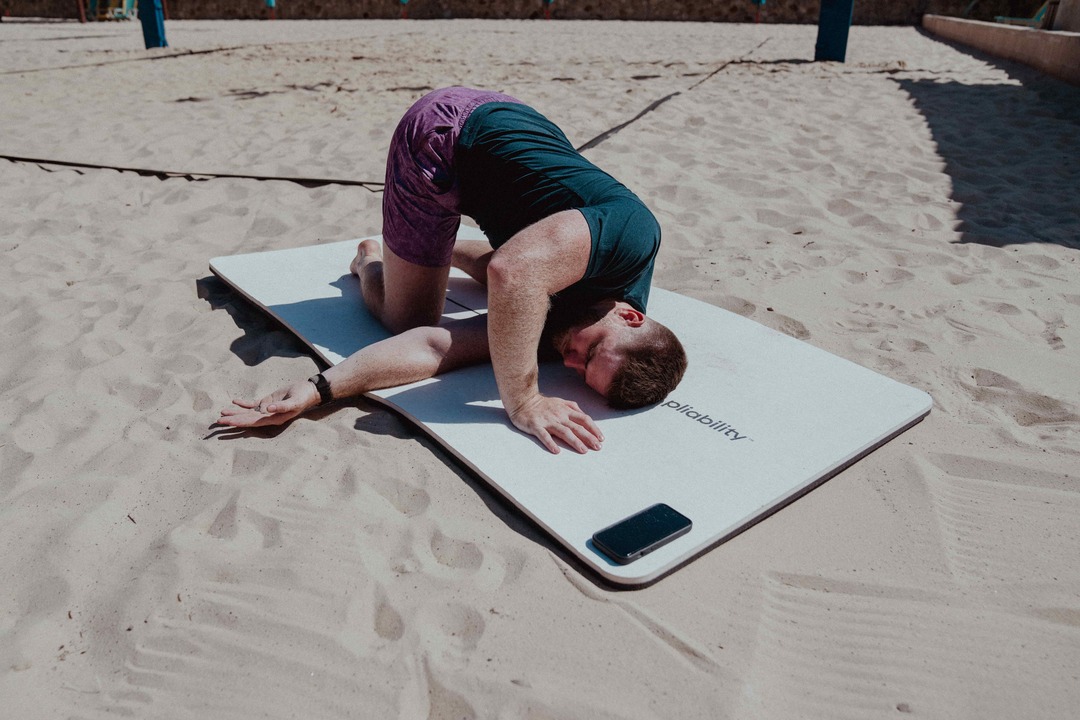
Mobility work during cooldowns helps reduce muscle tension and soreness after a workout. It promotes relaxation, enhances flexibility, and speeds up recovery by improving circulation and reducing stiffness.
Post-workout mobility exercises, such as deep stretching, allow your muscles and joints to return to their resting state gradually. This prevents stiffness and helps remove lactic acid buildup, which can lead to soreness.
Cool-down Stretches
After workouts, use static mobility exercises like pigeon pose or couch stretches to target areas that often get tight, such as:
- The hips
- Back
- Hamstrings
Spend at least 30 seconds to 1 minute on each stretch to allow muscles to lengthen and relax.
Keep Your Joints Fluid: The Importance of Mobility Exercises on Rest Days
Mobility training on rest days aids in recovery by maintaining flexibility and joint movement without placing stress on the body. It’s an excellent way to keep your body loose and improve your range of motion without adding extra strain.
Rest days for low-intensity mobility exercises ensure that joints stay fluid and muscles maintain flexibility. This helps prevent stiffness while giving the body time to recover from strenuous activities.
Active Recovery
Dedicate 15–20 minutes on rest days to mobility work, focusing on tight or overworked areas. Exercises like shoulder dislocations with a resistance band or 90/90 hip switches are perfect for these low-intensity sessions.
Lift Heavy, Move Well: The Importance of Integrating Mobility Exercises with Strength Training
Combining mobility exercises with strength training allows athletes to move through a full range of motion during lifts, which improves both:
- Flexibility
- Strength
This helps build more balanced muscle groups and reduces the risk of injury during heavy lifts.
Synergistic Benefits
Mobility exercises, when combined with strength training, enhance movement efficiency. Improving ankle mobility can help athletes squat deeper, building more power in the:
- Legs
- Glutes
Similarly, shoulder mobility exercises can help:
- Improve overhead pressing form
- Reduce strain on the joints
Synergistic Benefits
Add mobility drills between sets of strength exercises. If you're performing squats, include ankle or hip mobility work between sets to improve form and prevent tightness.
The Key to Improving Mobility Exercises for Athletes: Consistency
Mobility gains are best achieved through consistency. Sporadic mobility training may not yield long-term benefits, but incorporating it regularly into your workout routine will improve flexibility and performance.
Like any aspect of athletic training, mobility requires consistent practice to see improvements. Regularly working on mobility ensures that your joints and muscles maintain their range of motion, making you more resilient to injury and allowing for better movement during sports.
Mobility Breaks
Aim to include mobility exercises in your routine at least 3-4 times a week, whether as part of warm-ups, cooldowns, or active recovery sessions.
Common Mobility Mistakes Athletes Make (and How to Avoid Them)

Athletes often confuse flexibility with mobility, focusing on static stretching rather than dynamic movement. While flexibility helps with muscle length, mobility involves joint strength and control, which are more critical for performance.
Flexibility alone doesn’t guarantee good movement control. Without incorporating strength into your range of motion, you risk instability, which can lead to injury. Mobility combines flexibility with strength and control to ensure proper movement patterns.
Dynamic Approach
To avoid overdoing static stretching, incorporate dynamic mobility exercises that involve both stretching and strength. Instead of holding a static hamstring stretch, try dynamic leg swings that activate muscles while improving range of motion.
Don’t Neglect Key Joints: The Importance of Balanced Mobility Training
Athletes often focus on improving mobility in the hips and shoulders but neglect other key joints like the ankles or thoracic spine. This creates imbalances and restricts overall movement efficiency. Mobility should be addressed in all the major joints, not just the ones that seem tight or overused.
Neglecting certain joints, such as the ankles or the upper back, can lead to compensatory movement patterns that reduce performance and increase the risk of injury.
Full-Body Mobility
To avoid this mistake, create a balanced mobility routine that targets the full body, with specific focus on often-overlooked areas like the ankles, wrists, and thoracic spine. Adding ankle mobility exercises can improve your squat depth and running efficiency.
Stay Consistent: The Key to Improving Your Mobility
Mobility gains are achieved through regular practice, not sporadic efforts. Inconsistent training leads to little improvement and may result in athletes reverting to old movement patterns that cause tightness or injury.
Mobility is similar to strength training in that consistency is key to seeing results. When athletes don’t make mobility training a regular part of their routine, they miss out on the long-term benefits of improved joint health and range of motion.
Consistent Mobility
To avoid this mistake, dedicate specific days or portions of your workout to mobility. Consistently include:
- Mobility drills in your warm-ups,
- Cooldowns
- Rest day routines to ensure ongoing improvement
Skip the Static Stretches: They Hurt Performance Before Workouts
Static stretching before intense activity can reduce muscle strength and power, hindering athletic performance. It can also increase the risk of injury if muscles aren’t adequately warmed up for dynamic movement. Static stretching relaxes the muscles, which is great for recovery, but it’s not ideal before activities that require:
- Strength
- Power
Dynamic Warm-up
Dynamic mobility exercises, on the other hand, engage the muscles and prepare them for the demands of your sport. Use dynamic stretches and mobility exercises during your warm-up to avoid this mistake, saving static stretching for your post-workout cooldown.
Dynamic movements like leg swings, arm circles, and hip rotations will better prepare your muscles for intense activity.
Don’t Overdo It: Forcing Flexibility Can Lead to Injury
Athletes may push their bodies beyond their natural range of motion to force flexibility, which can result in muscle strains or joint injuries. Overstretching can lead to joint instability, increasing the risk of acute injury.
Controlled Flexibility
Forcing flexibility without control or strength can lead to injury. It’s crucial to develop mobility gradually by working within your current range of motion and building strength alongside flexibility. To avoid this mistake, gradually increase your range of motion with controlled movements.
Avoid bouncing or forcing a stretch. Instead, focus on active mobility exercises that help strengthen muscles while improving joint flexibility.
How Pliability Can Help You Achieve Optimal Mobility
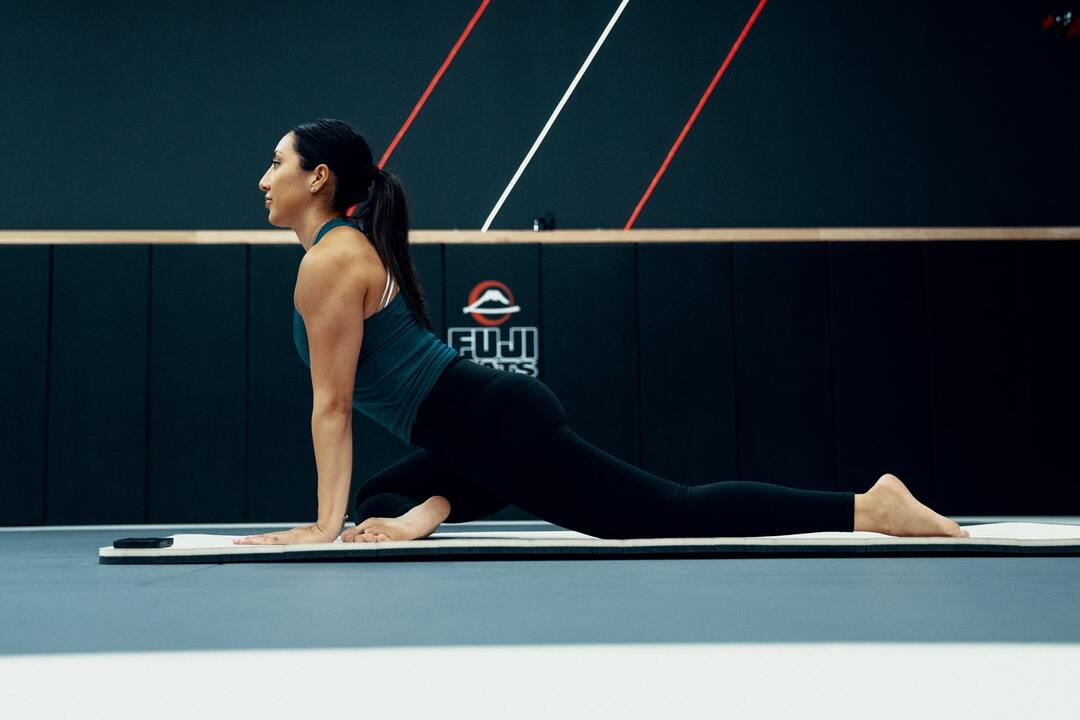
Every athlete has different mobility needs based on their sport, training intensity, and areas of tightness or weakness. A one-size-fits-all approach doesn’t work, so personalized mobility programs are essential. Pliability’s app offers custom mobility programs tailored to each athlete’s unique needs.
Personalized Plans
Based on your sport, goals, and body areas that need improvement, the app generates a mobility plan that targets key joints and muscles, ensuring efficient and effective results. Use the app to create a daily mobility routine that fits your training schedule.
Whether you need to focus on hip mobility for running or shoulder mobility for swimming, the app will guide you through exercises relevant to your sport.
Say Goodbye to Guesswork: The Body-Scanning Feature
Many athletes aren’t fully aware of where they’re tight or lacking mobility, which can lead to imbalances or injuries. A tool that helps identify problem areas is key to addressing specific mobility limitations. Pliability’s body-scanning feature allows you to pinpoint areas of tension or reduced range of motion.
This tool helps you understand which body parts need the most attention. It allows you to focus your mobility training on areas that will significantly impact your performance. The body-scanning feature allows you to track your progress over time.
Improved Confidence
As you incorporate mobility exercises into your routine, you’ll see improvements in flexibility and range of motion, giving you the confidence to push harder in your training.
Master Your Mechanics: The High-Quality Video Library
Proper technique is critical in mobility training. Performing exercises incorrectly can lead to strain or injury, negating the training's benefits. Access to clear, easy-to-follow video instructions ensures athletes get the most out of their mobility routines.
Pliability’s app provides a library of high-quality instructional videos demonstrating how to perform each mobility exercise correctly. These videos ensure athletes can follow along and perform movements safely and effectively, maximizing their results.
Visual Guidance
Use the video tutorials as a guide during your mobility sessions. Whether you’re a beginner or an experienced athlete, these videos will help you perform exercises with the right form, preventing injury and enhancing your flexibility.
Build Mobility Into Your Routine: Daily Updated Mobility Routines
Consistency is critical to improving mobility, and having daily-updated routines ensures athletes stay on track with their progress. Mobility is not a one-time fix but an ongoing practice that builds over time.
Pliability offers daily-updated mobility routines that adapt to your performance and goals. These routines are designed to fit into your workout schedule, ensuring that mobility becomes a regular part of your training rather than an afterthought.
Daily Consistency
Follow your daily personalized mobility routine, whether it’s a 10-minute warm-up session or a longer, more focused mobility workout. The app’s daily updates keep you on track, helping you make incremental progress toward your mobility goals.
Level Up Your Mobility with the Pliability Community
Being part of a community can be motivating, especially for athletes who thrive on competition and tracking their progress. The leaderboard feature encourages consistency and engagement with mobility routines.
Community Motivation
Pliability’s app includes a community leaderboard to track and compare your mobility progress with others. This feature creates a sense of accountability and competition, encouraging you to stay consistent with your mobility practice.
Engage with the Pliability community and use the leaderboard as a motivational tool. Compete with other athletes to stay on top of your mobility goals and celebrate your progress over time.
Related Reading
- Golf Mobility Exercises
- Upper Body Mobility Exercises
- Mobility Exercises For Runners
- Can You Over Stretch
- Squat Mobility Exercises
- Functional Mobility Exercises
- Why Stretching Is Important
- Foot Mobility Exercises
- Arm Mobility Exercises
- Hamstring Mobility Exercises
- Elbow Mobility Exercises
- Rotator Cuff Mobility Exercises
- Bed Mobility Exercises
- What Are Mobility Exercises
- Full Body Mobility Exercises
Improve Your Flexibility with Our Mobility App Today | Get 7 Days for Free on Any Platform
Mobility is the ability to move freely and easily, both in the moment and over time. It’s often confused with flexibility, the range of motion of muscles and tendons around a joint. Mobility, on the other hand, is about the joint itself, how well it can move, and the body’s ability to control that movement.
Improved Performance
If you look at a squat, good mobility will allow you to perform the movement with proper form, even if you lack flexibility. Improving mobility helps performance, allowing athletes to execute movements more efficiently and with fewer chances of injury.
Mobility also aids recovery, as it helps restore function and movement to an area after injury or trauma. Improving mobility can also reduce pain, especially if you’re experiencing discomfort from a lack of movement or poor function.
Related Reading
- Gowod Vs Pliability
- Tennis Mobility Exercises
- Weighted Mobility Exercises
- Cervical Mobility Exercises
- Resistance Band Mobility Exercises
- Rib Mobility Exercises
- Glute Mobility Exercises
- Best Yoga App
- Free Apps For Stretching And Flexibility
- Mobility Apps
- Stretching Apps
- Chest Mobility Exercises
- Glute Stretches
- Gluteus Medius Stretch
- Glute Stretch
- Cervical Radiculopathy Exercises




